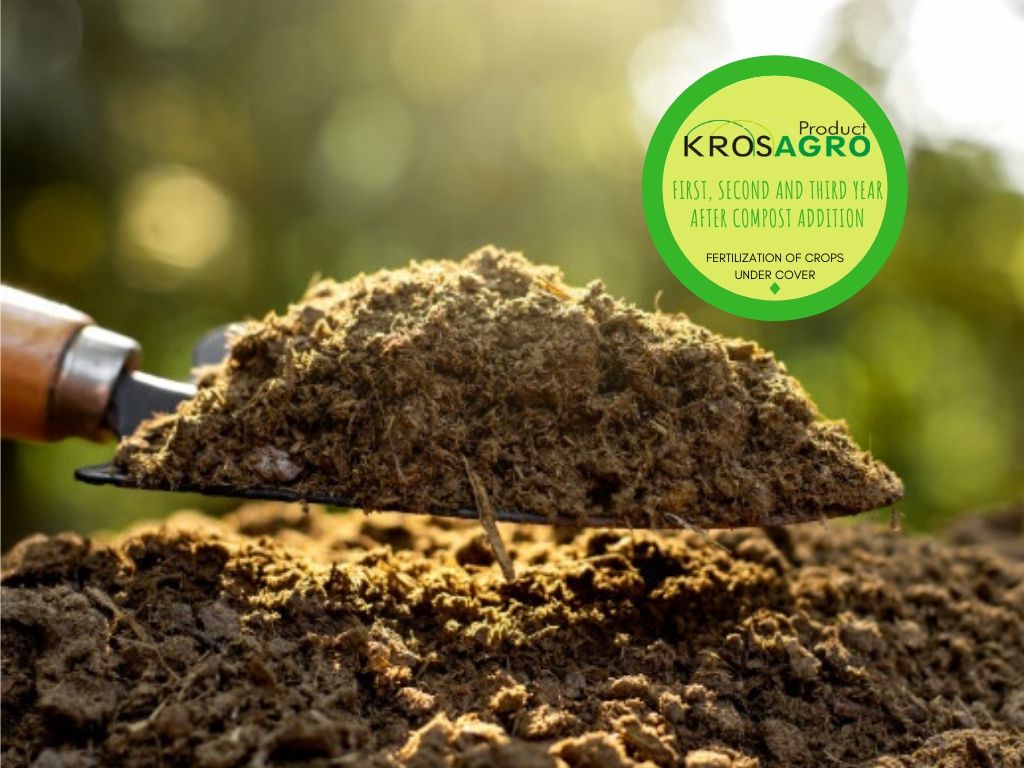The first, second and third year after compost addition is an article about when and how to use this natural fertilizer. The waiting period following introduction of this substance will determine which plants to grow in the polytunnel. Whether it is a domestic or professional cultivation, bio fertilizers are gaining more and more support, often replacing artificial products. Crop developing in such conditions will be fully ecological.
Contents
First, second and third year after compost addition in a greenhouse
Compost is one of the most commonly used natural fertilizers. It contains a lot of valuable macro and micro nutrients. Once absorbed by plants, these positively influence their proper growth, soil structure, as well as humus formation. Depending on the raw material used to produce manure, saturation with calcium, magnesium, phosphorus, potassium and nitrogen will vary. These ingredients have a huge impact on crop development. Microorganisms found in any substrate support the chemical processes occurring in the soil. It is not recommended to use fresh compost as it contains too much ammonia. One can spread organic matter that has been resting for a minimum of one year.
When and how to use compost in a greenhouse?
Following delivery in the garden or plot, spread it inside the greenhouse and then dig it, at a depth of about 20 cm. This process should not be delayed, as compost loses its properties over time. The average ratio suggested by guides and experienced gardeners is about 40 kg per 10 m2 for hobby polytunnels. This will of course differ depending on the type of soil. With light substrates, more will be required, while heavy ones will be lightly boosted. The ideal period for feeding soil is autumn following cultivation, annual plant removal and tunnel sterilization.
Compost for vegetable cultivation
A slow decomposition of compost causes nutrients to be released gradually. Therefore, season after season, it is worth growing different species and varieties of vegetables on the same site. This enables optimal intake of soil resources. Before starting to plan plant rotation, make sure to know their respective needs. In the first year, vegetables with high fertilizer requirements can feature, in the second the ones with medium needs, in the third root species, and finally legumes.
What vegetables should be planted after adding compost?
• First year:
celery, most lettuces, rhubarb, melon, cucumber, pepper, cauliflower, kale, broccoli, eggplant, pumpkin, leek, spinach, asparagus.
• Second year:
broad beans, onions, beans, peas, carrots, okra, radish, scorzonera, garlic, endive,
• Third year:
chicory, soybean, lamb’s lettuce, parsley, peanuts, parsnip, cherry tomato
Fruits fertilized with compost
Fruit trees and shrubs are more and more often grown inside polytunnels. These facilities offer a lot of benefits to growers, protecting plants against harmful weather conditions, voracious birds, limiting access to pests as well as creating a favorable microclimate. To create ideal soil conditions, compost is added before setting up the orchard. The evenly distributed fertilizer is mixed with the top layer of soil. The following years, composted manure, incorporated with litter, is placed around trunks.
